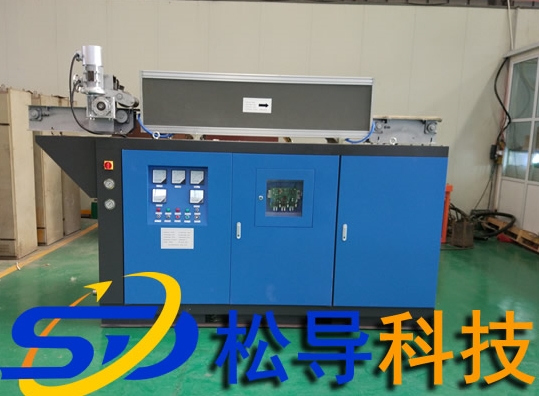- 23
- Sep
Selection of tempering temperature for PC steel induction heating furnace
Selection of tempering temperature for PC steel induction heating furnace
(1) The principle of selecting tempering temperature for PC steel The best structure of PC steel under the service conditions is tempered troostite. This organization has the best resistance to stress relaxation. The relationship between tempering temperature and mechanical properties of three low-alloy steels of high, medium and low. Tempered troostite can be obtained by tempering at medium temperature (350~500°C), and its relaxation rate is the smallest, that is, the resistance to stress relaxation is the best. Therefore, PC steel
The selection of the tempering temperature of the induction heating furnace must ensure that the quenched martensite is transformed into troostite, that is, intermediate temperature tempering is used. The tempering temperature of the silicon ingot low-alloy PC steel induction heating furnace is 400-500°C.
(2) The mechanism of the stress relaxation resistance of PC steel The stress relaxation resistance of the steel is the mechanical property related to the service life of the PC steel. It refers to the process in which the elastic deformation of steel is transformed into plastic deformation under tension. The faster the transformation process, the greater the plastic deformation of the steel and the closer it is to fracture. When the plastic deformation reaches the limit, the steel breaks. Therefore, it is hoped that the lower the speed of this transformation, the longer the service life of the steel. For this reason, it is desirable that the relaxation rate of the steel material is as small as possible. An effective way to reduce the relaxation rate is to increase the yield strength and maintain good toughness. The stress relaxation resistance of PC steel has little relationship with its chemical composition. It mainly depends on the metallographic structure of the finished steel. The mechanism analysis of the stress relaxation resistance of different tempered structures of quenched martensite is as follows.
Tempered troostite is a tempered product at moderate temperature and has the best resistance to stress relaxation. Tempered troostite is a highly dispersed granular cementite structure distributed on the flake iron cord body. This kind of microstructure gives the steel a high yield strength and a certain toughness, and a strong resistance to plastic deformation.
Tempered sorbite is the product of high temperature tempering, and its stress relaxation resistance is slightly lower than that of tempered troostite. Tempered sorbite is a structure composed of polygonal ferrite and granular cementite. Its strength is high, but due to its high plasticity and toughness, its resistance to plastic deformation is weak.
Tempered martensite is a low-temperature tempered product, and its resistance to stress relaxation is the worst. The main reason is that tempered martensite is a supersaturated solid solution of carbon in ferrite. Although its strength and hardness are high, it is brittle, unstable and prone to structural transformation, resulting in poor stress relaxation resistance.
Based on the above analysis, tempered troostite has the characteristics of stable structure and proper matching of various mechanical properties, so that the steel has the best resistance to stress relaxation.

